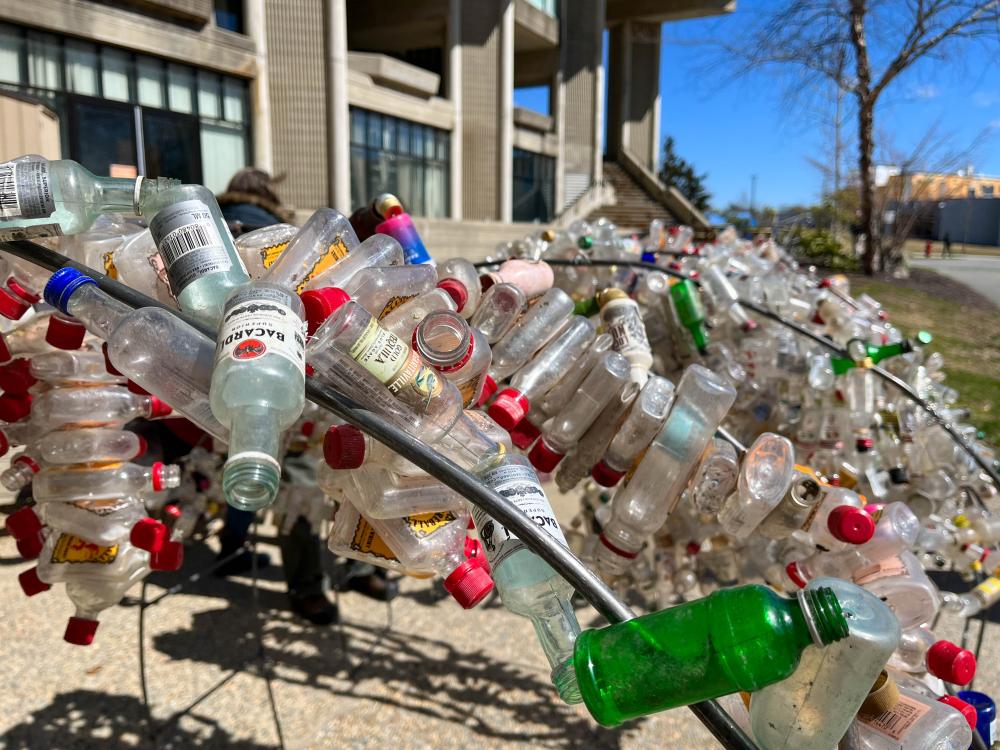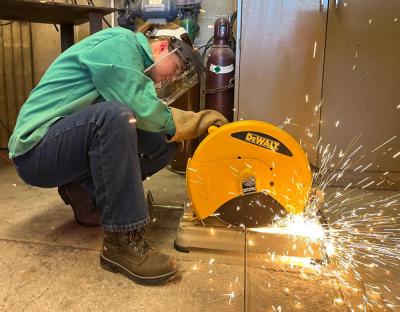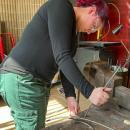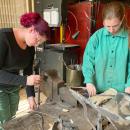‘We are literally becoming trash’: Sculpture built from 30,000 nip bottles
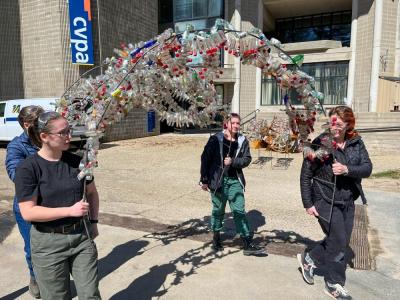

In her years combing beaches for trash to use in her eco-activist artwork, Rebecca McGee Tuck has found some pretty weird stuff, the strangest being the top row of teeth from somebody’s dentures that had washed ashore.
Everything she collects, even the creepy stuff, goes into her artwork.
“If something comes into my studio, it never leaves to go into a landfill, it leaves as part of artwork,” Tuck said.
And now Tuck is working on her next unusual project—transforming over 30,000 mini alcohol bottles, known as “nips,” into a 60-foot-long sculpture that, once completed, will resemble a monstrous sea serpent.
Tuck is UMass Dartmouth’s resident artist in the College of Visual and Performing Arts. The sculpture is a collaboration that includes the university’s art and sustainability departments.
The design for the sculpture came out of brainstorming sessions called “trash talks,” where over 300 participants proposed their ideas for what the sculpture should look like.
The bottles were collected by Be the Solution to Pollution, a shoreline clean-up group that removes litter from beaches throughout southeastern Massachusetts including Dartmouth, Fairhaven, Westport, New Bedford and Fall River.
When all 30,000 bottles were delivered to UMass, Tuck was a little overwhelmed.
“It was out of control how many,” Tuck said. The bottles overflowed 15 large boxes and eight trash cans. “I was just like, ‘Oh my God, that’s like a monstrous amount of bottles.’”
That’s how the sculpture came to be known around campus as “the monster.”
Since January, UMass Dartmouth students have been stopping by to string the dirty bottles together like Christmas ornaments to drape over the sculpture’s welded steel frame.
“It’s kind of a spectacle,” Tuck said of the sculpture.
The sculpture is designed to be carried in a procession, and it takes over 30 students to carry it. When it’s completed, the sculpture will be paraded through downtown New Bedford on April 11 as a part of AHA Night, an event that celebrates local arts and history.
The sculpture is meant to draw awareness to the “monstrous” amount of plastic littering the environment, one of the greatest offenders being nip bottles that are commonly found littering streets, parks and beaches.
The sculpture is meant to symbolize the threat that plastic pollution poses to the environment. Overtime, plastics degrade into smaller particles, known as microplastics, that can leach into the environment and contaminate food and drinking water.
Art and Design Professor Stacy Savage said this is a threat to public health that people can’t continue to ignore.
“We are literally becoming trash,” Savage said. “Plastic is becoming part of our DNA. We are killing ourselves with this material.”
The sculpture’s head is designed with a hinged jaw that opens and closes. Savage said that when the mouth opens, a long tongue will roll out covered in educational, activist materials about reducing plastic waste. The tongue will include a QR code leading back to the website for Be the Solution to Pollution, Savage said.
”We hope that people will become aware of how much waste we actually produce because most of this just comes from the beach,” said UMass freshman Katie Erwin. “That’s so bad for the environment.”
In recent years, environmental groups and state representatives have pursued legislation to update Massachusetts’ 1982 bottle bill to raise the refund from 5 cents to 10 cents for returning recyclable containers. The proposals also call for Massachusetts to expand the bottle bill to include nips bottles in its bottle redemption program.
Deirdre Healy, of the UMass Dartmouth Leduc Center for Civic Engagement, said this would incentivise more people to recycle plastics, such as nip bottles, that otherwise litter streets and beaches.
“Expanding the bottle bill would keep [nip bottles] out of the ocean and off the highways and byways,” Healy said.



